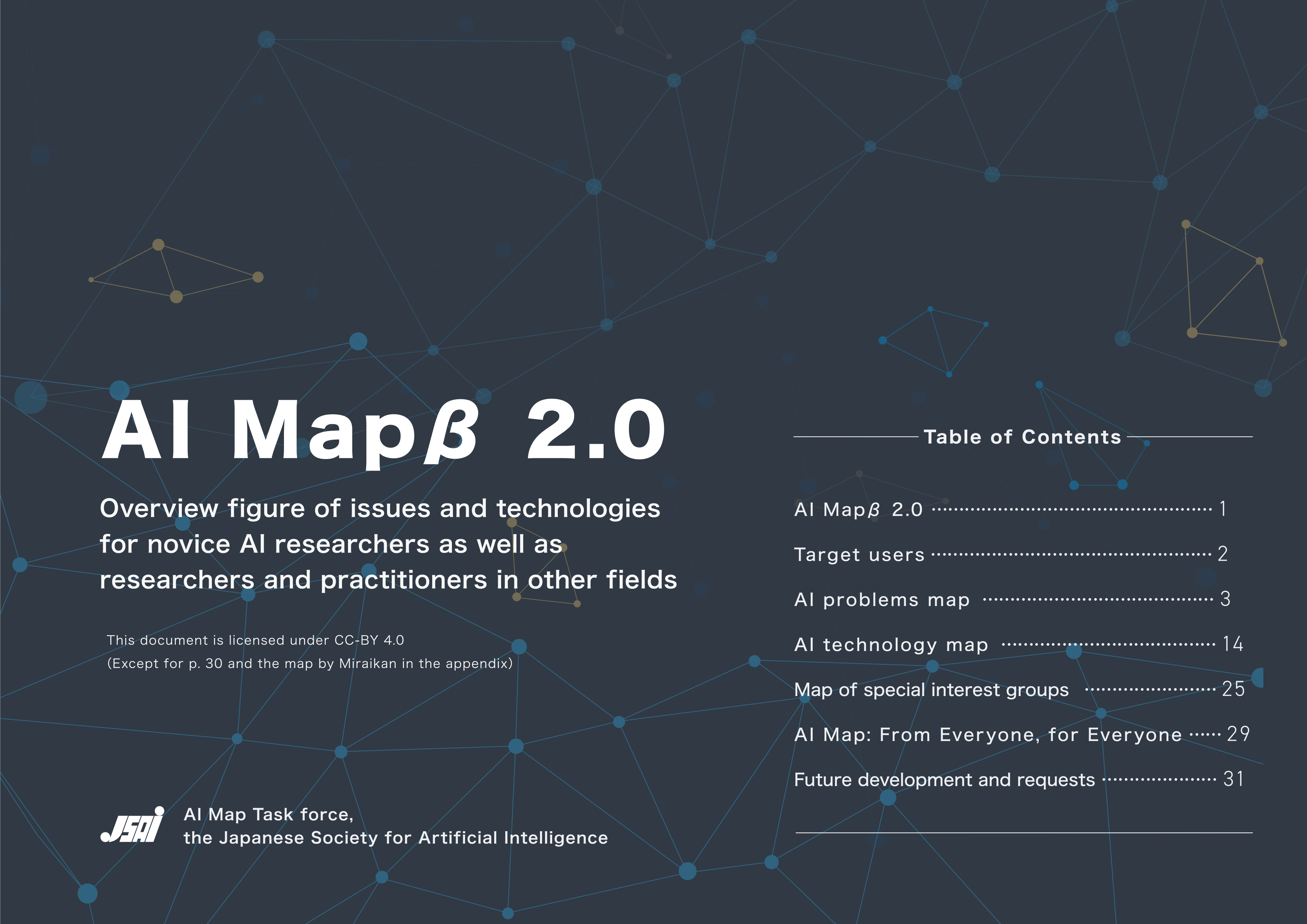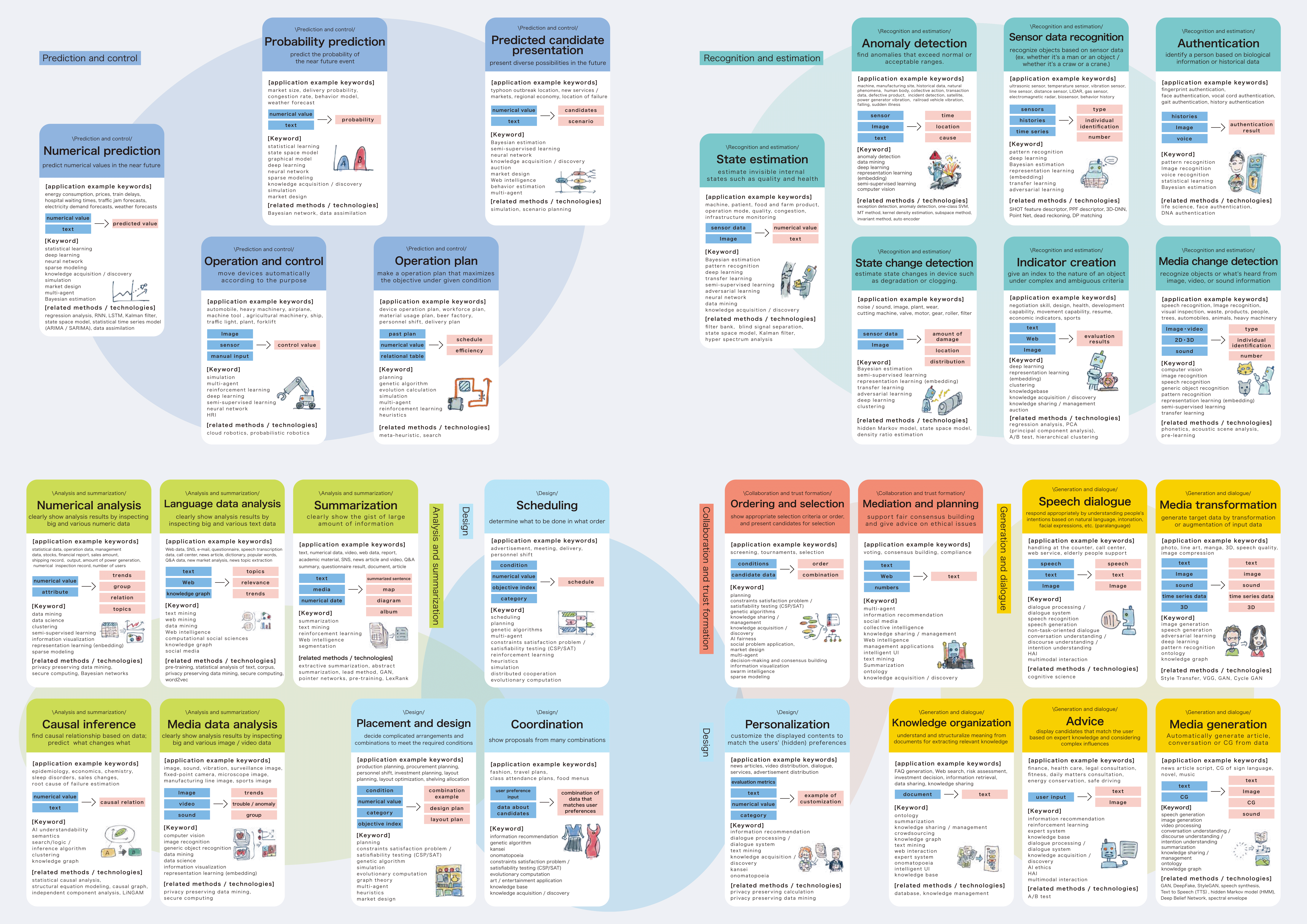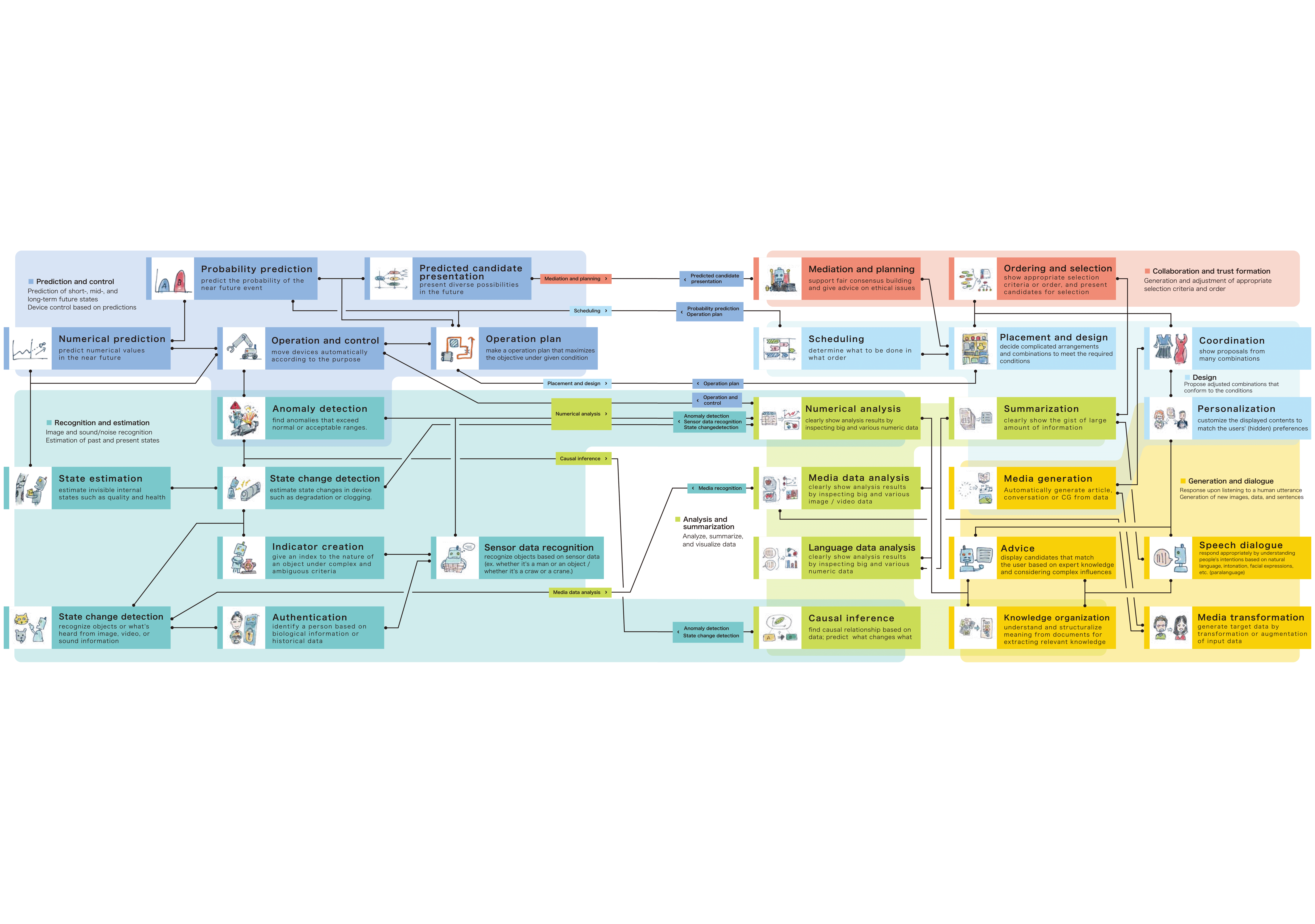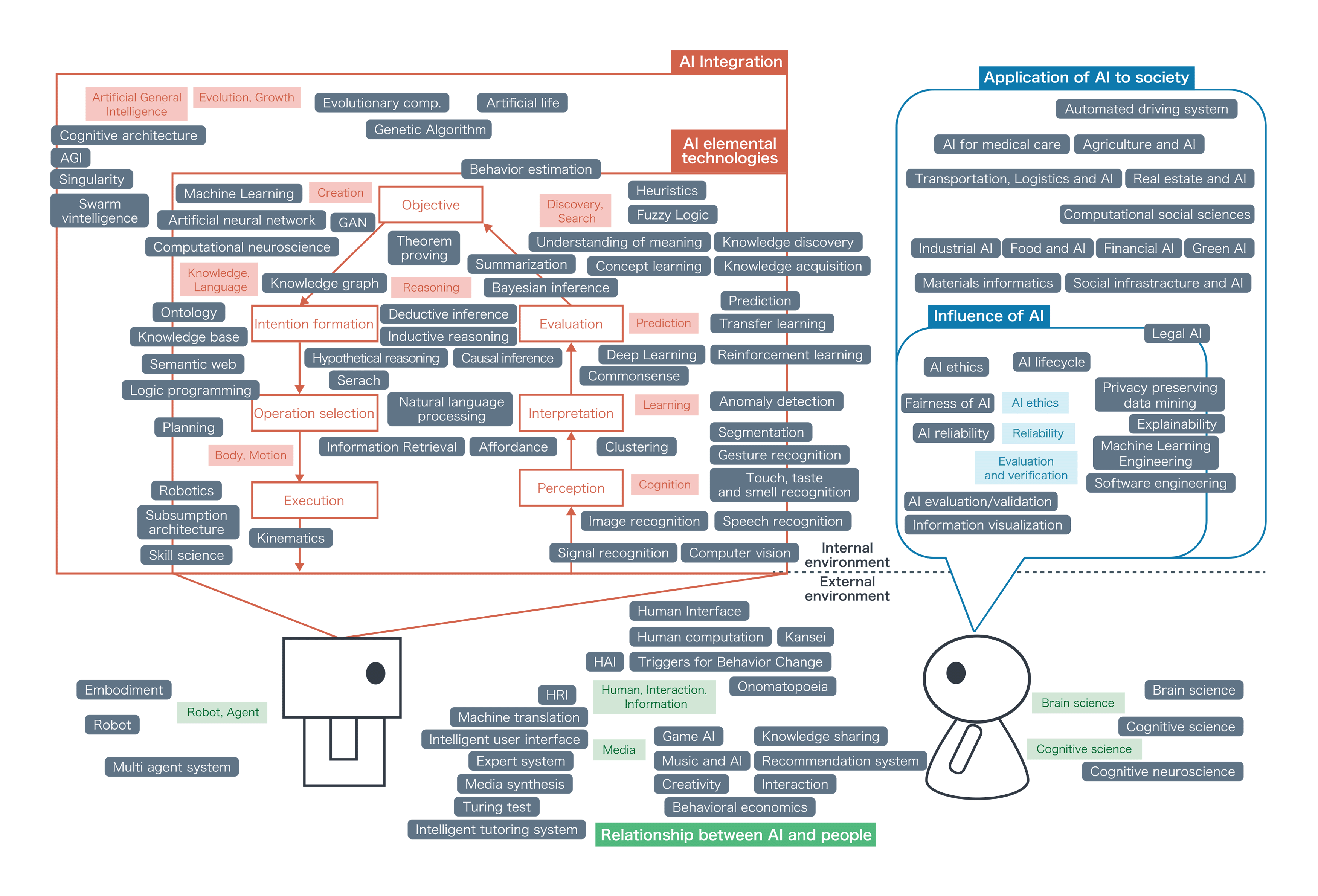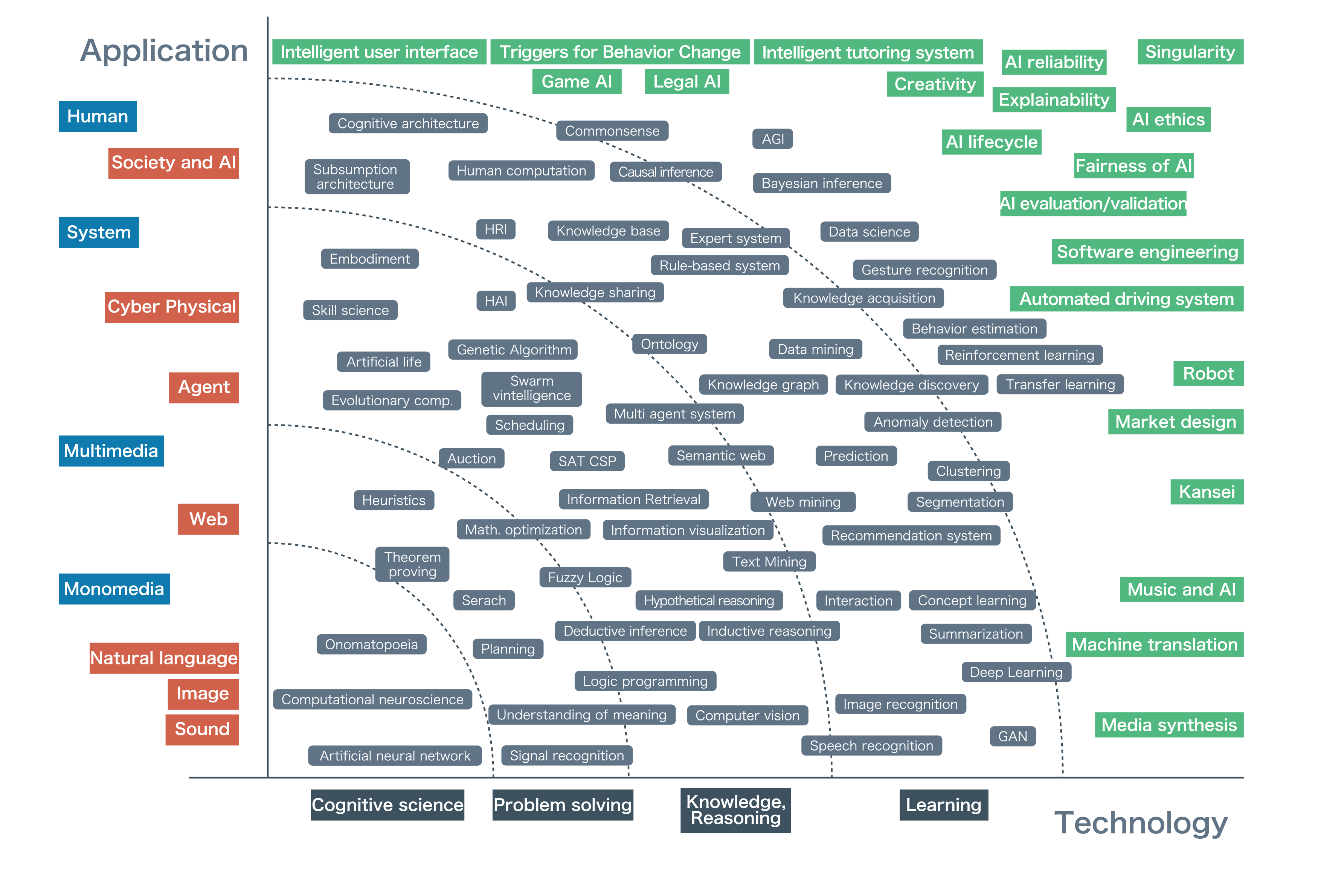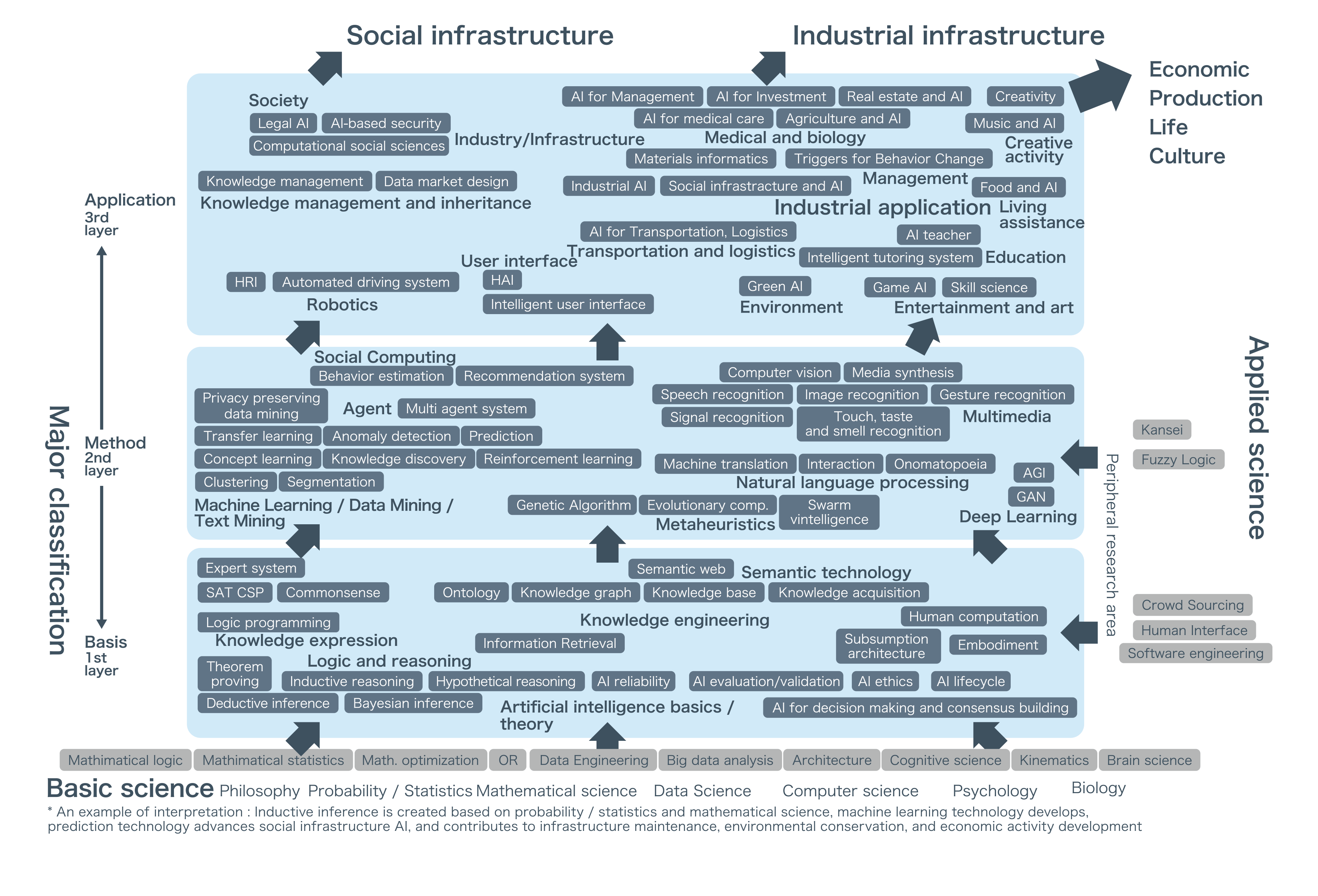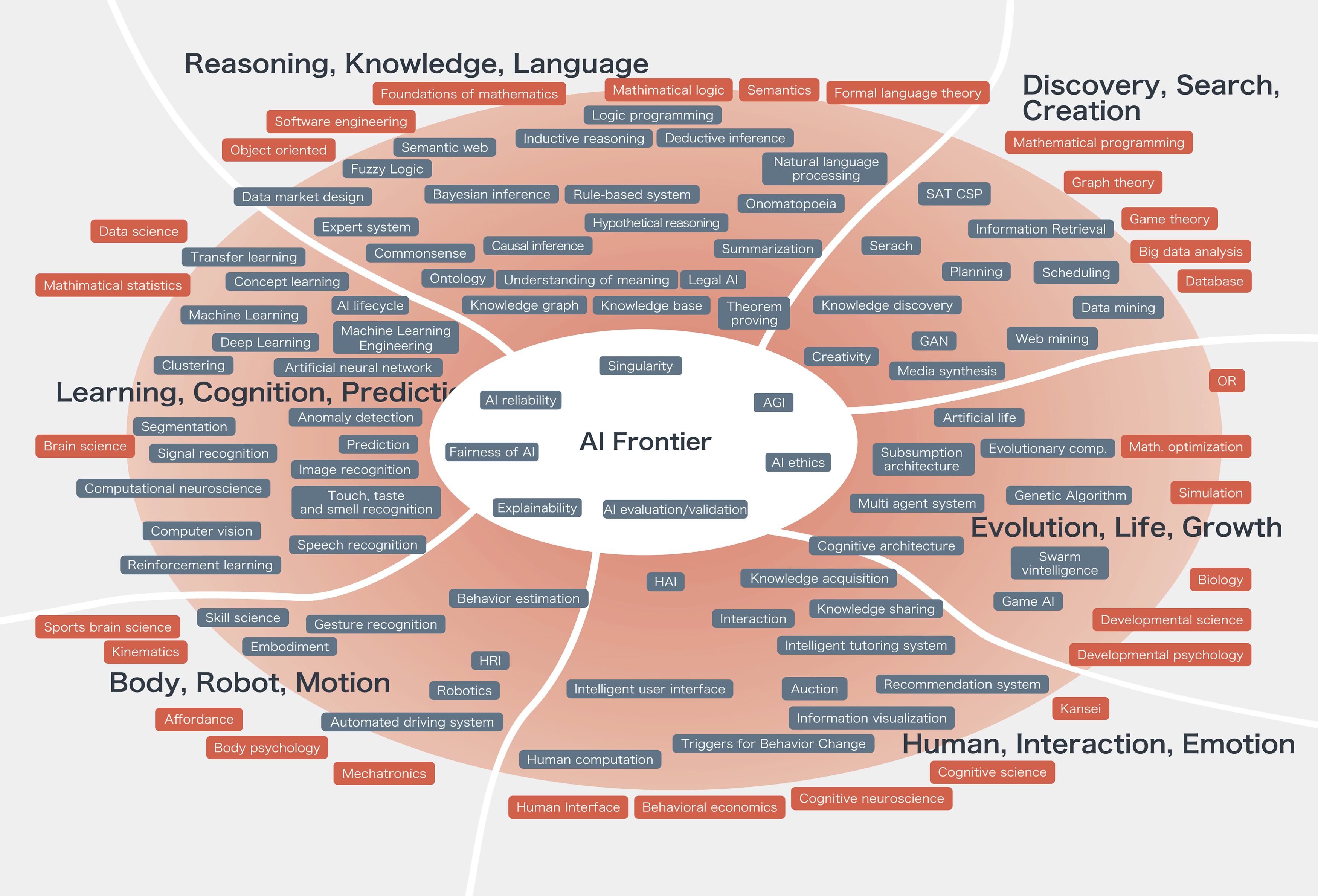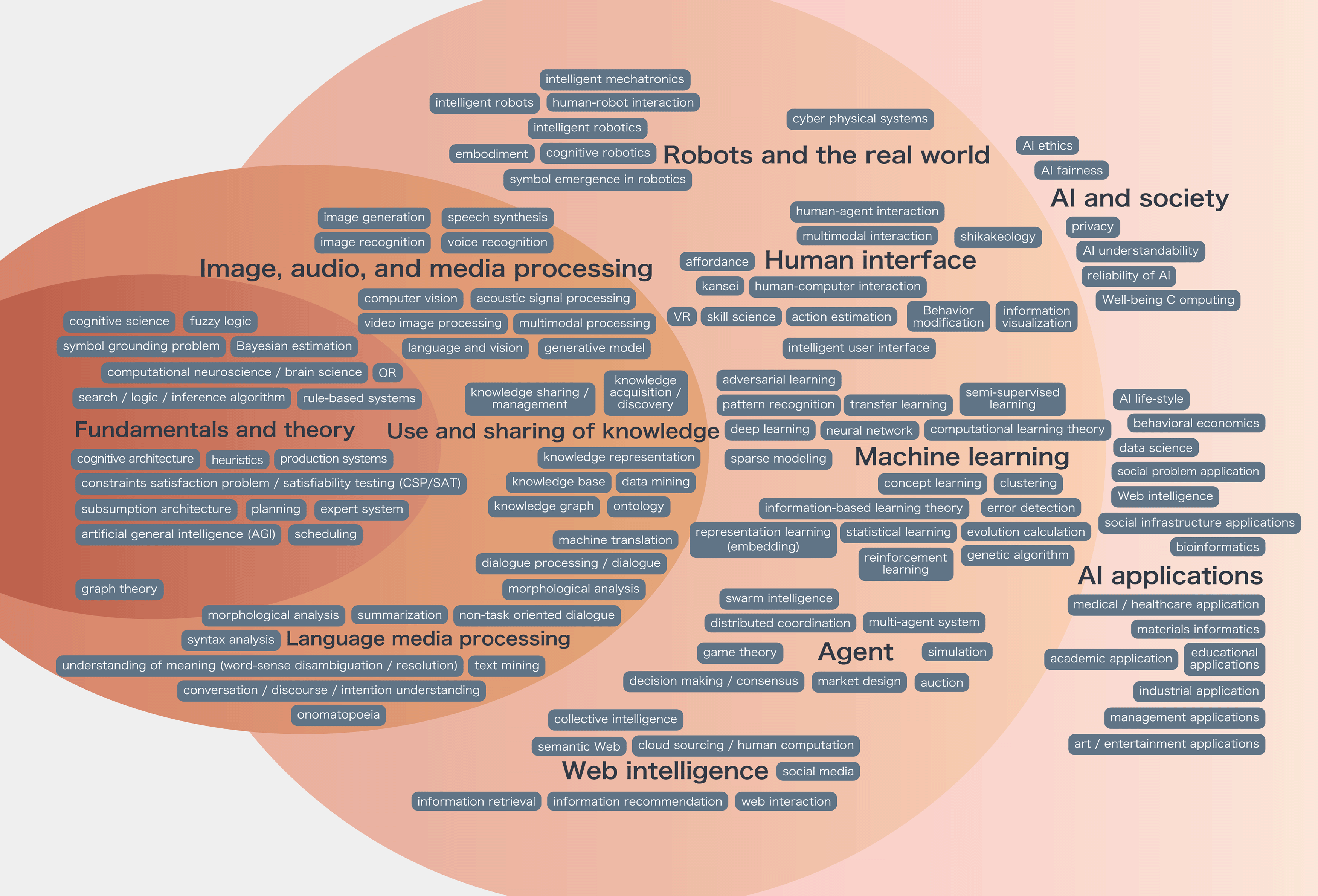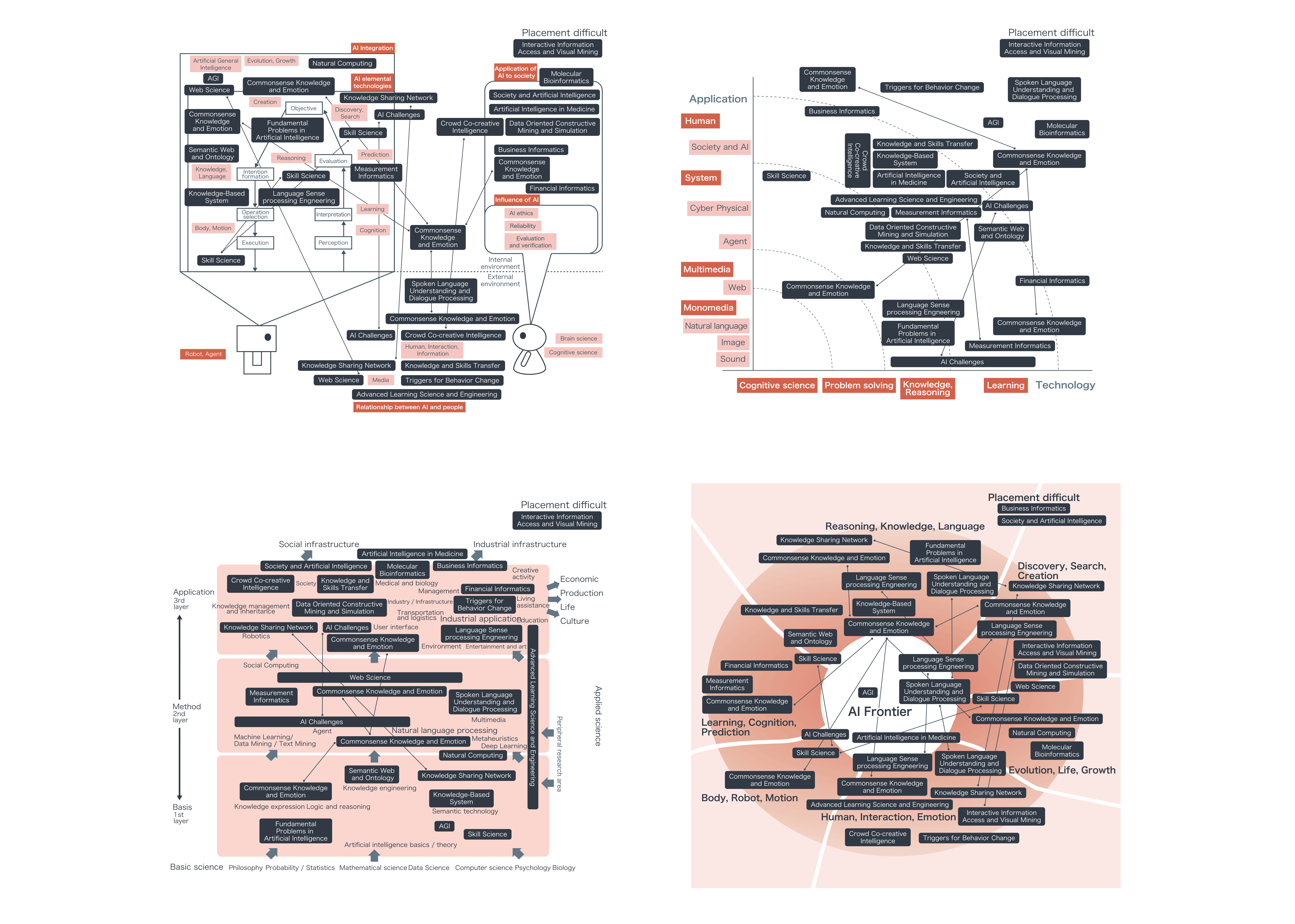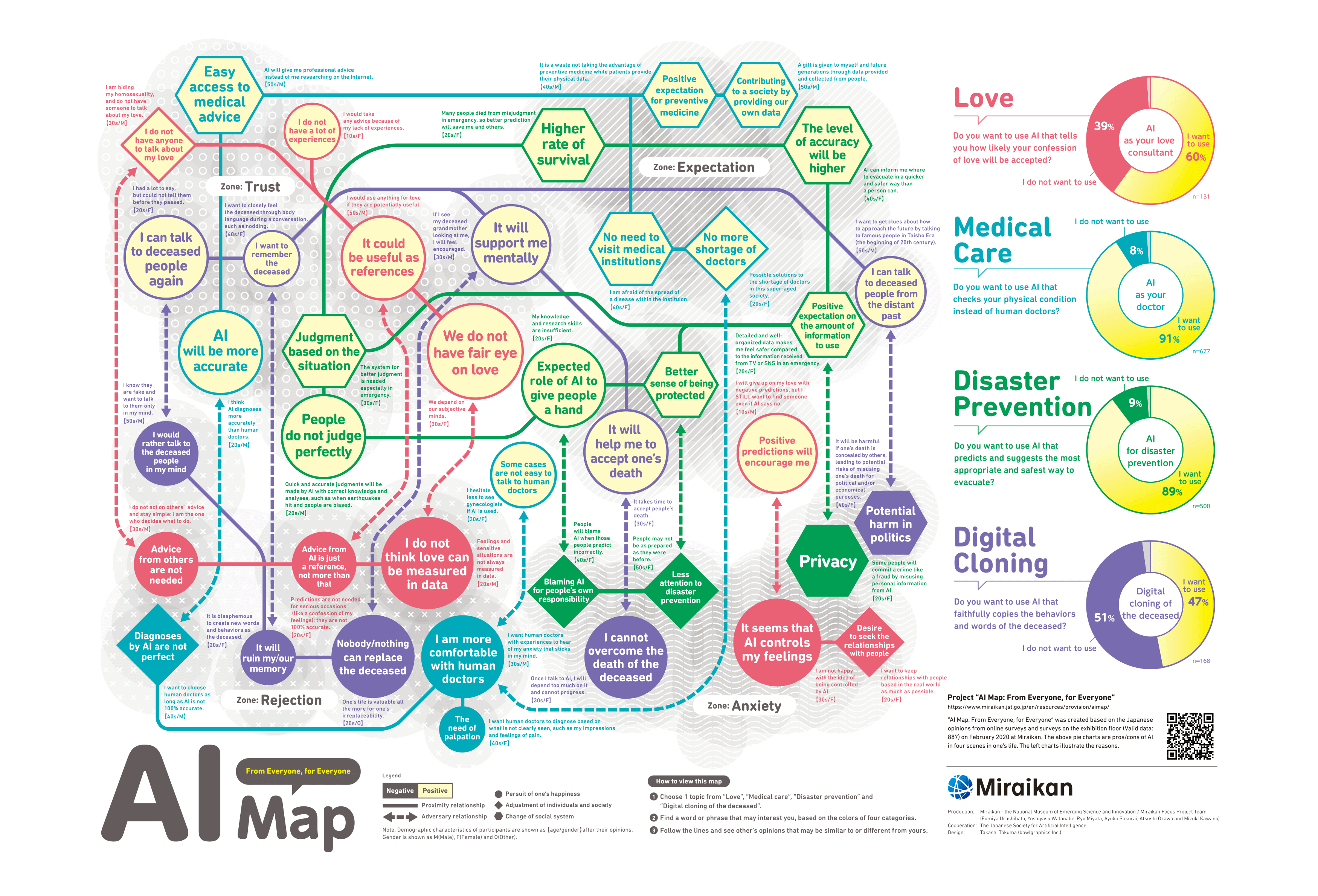
Table of Contents
- AI Map β 2.0
- Target users
- AI problems map
- Tutorial
- Correspondence between the AI problems map and AI technology map
- AI technology map
- Map of special interest groups
- AI Map:From Everyone,for Everyone
- Future development and requests
- How to make problem cards
- AI Map β(old edition)
AI Map β 2.0
Overview figure of issues and technologies for novice AI researchers as well as researchers and practitioners in other fields
The field of AI research is expanding, and it is becoming increasingly difficult to step back and see the entire field. In addition, AI systems developed from the results of AI research are beginning to be applied in the real world, making it difficult to grasp the relationship between AI systems and AI technology. In response, we created AI Map β 2.0 as a guide for novice AI researchers, as well as researchers and practitioners in other fields who aim to utilize AI. AI Map β 2.0 is an advanced version of the AI Map β published in 2019 and comprises two map: an AI problems map and an AI technology map. An overview is presented below.
AI problems map
The AI problems map consists of a set of “problem cards,” which feature approaches to problems that AI systems are expected to solve, and a “problems-relation map” showing the relationships among them. Researchers and practitioners in various fields can use the map to help them organize and explore issues from the perspective of AI utilization, while keeping their own issues in mind. We hope that the map will provide novice researchers with an overview of problems/approaches and help them set clear goals. Case studies of AI systems and their industrial applications are already widely available in print and online. This map is not intended to replace them but rather to provide a broader perspective of the issues and the relationships between these issues and AI technology, which may be difficult to obtain at present.
AI technology map
The AI technology map is a revised version of the AI Map β, published in 2019. With input from the editorial committee of the Japanese Society for Artificial Intelligence (JSAI), we replaced the keywords with those used in technical papers and added some new ones as well. In addition, the standardization of keywords makes it possible to search technical papers published in the future by keyword. We believe the AI technology map will be a useful guidepost for researchers and practitioners in various fields, helping them collect information for research and development activities. We hope that novice researchers will recognize the where their own research field fits into the larger puzzle and use it as a guide for their studies.
The two maps complement each other and can be used to arrange various combinations of issues and technologies. We hope you will use AI Map β 2.0 to find an approach to research and system construction that is suitable for you by moving back and forth between the two maps.
This document also includes an updated map of JSAI special interest groups (SIGs map) and an illustration named “AI Map: From Everyone, for Everyone”. The “AI Map: From Everyone, for Everyone” visualizes trends of opinions and perspectives, and hopes and fears on AI-related technologies on the basis of frank voices from Japanese respondents by the National Museum of Emerging Science and Innovation (Miraikan).
[Note for citation or reuse of the AI Map]
The AI Map can be used in the following manner within the scope of citation.
- – Please do not copy and post the entire booklet.
- – Please include the following for citation:
AI Map beta 2.0 (2020. June ed.),
the Japanese Society for Artificial Intelligence (JSAI) - – Please include the URL for downloading, if possible.
Considering the purpose of the AI Map, JSAI will not exercise its right to identity for the map. The map can be supplemented or partially modified.
The AI Map beta 2.0 is licensed under CC-BY 4.0 (excluding the content on page 30 and maps created by the National Museum of Emerging Science and Innovation in the appendix).
If possible, please send the citing material to the AI Society Office (email:info[at]ai-gakkai.or.jp, replace [at] with @). We will use the information for future activities.

